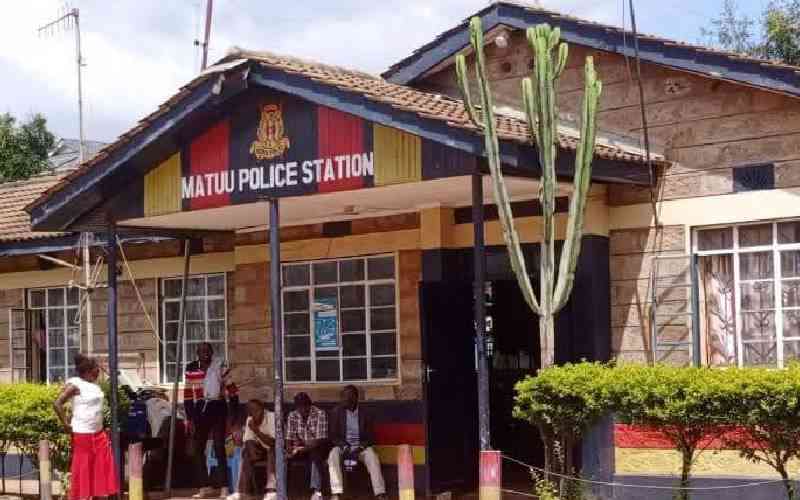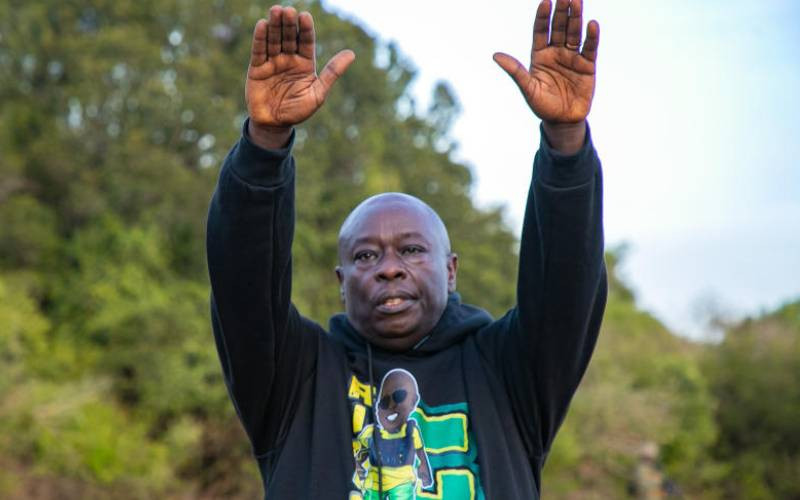By GATONYE GATHURA
NAIROBI, KENYA: The discovery of huge amounts of underground water in Turkana in September is perhaps the biggest scientific finding in the country as we come to the end of the year.
To the locals, the discovery of water by the French company Radar Technologies International (RTI) using space-based exploration technology called WATEX system may be bigger news than the earlier discovery of oil in the same area.
The discovery of oil by UK company Tullow Oil Plc in 2012 will, however, remains one of the major discoveries of all time in Kenya. Tullow, just like RTI, applied advanced technologies involving aerial seismic data collection and 3D interpretation capacities.
The finds were made in the same areas by foreign companies using imported technologies.
The completion of Thika Highway early in the year, the launch of the construction of a new railway line and expansion of Jomo Kenyatta International Airport all using Chinese technology reflects a country whose development in science and technology has stagnated.
Even as we cross into the new year, the country faces a maize deficit of 10 million bags which could see the price of the staple food rise beyond the reach of many Kenyans.
During the monthly meeting of a group called Open Forum on Agricultural Biotechnology in Africa held in Nairobi, food scientists offered what they said was the most logical solution to the impending food crisis.
The group wants the Government to lift a ban placed on the importation of genetically modified foods which was placed last year over safety concerns.
“The Government should not wait for shortfalls in domestically produced maize to lift the ban on GM food and products,” Dr Mercy Kamau of Egerton University’s Tegemeo Institute had told the meeting.
While unfortunate, the deficit now being used by GMO lobbyists to indicate a crisis is nothing new because the county has been facing maize deficits almost every year in the last decade.
Maize production
According to the Food and Agricultural Organisation of the United Nations, Kenya’s maize production ranges between 24 and 33 million bags per year against an estimated demand of 45 million bags annually.
Kenya has been surviving on informal cross-border imports from the neighbouring countries to close production gaps in maize, potatoes, tomatoes, beans and other food crops and there is no evidence that this is going to change soon.
Kenyan scientists have been researching on drought-resistant maize crop but more than a decade later they are yet to produce a single variety that is ready for distribution to farmers.
Stay informed. Subscribe to our newsletter
With about 40 universities and more than a dozen national and international research facilities, the country remains a major exporter of jobs and importer of technologies.
Kenyans still continue dying of diseases such as diarrhoea, HIV and pneumonia, which are no longer major problems in developed countries. Products for mitigating these diseases such as bed nets, condoms and medicines are still imported.
Although Kenya leads in the development and publication of research papers in the region, according to the latest figures by the Global Research Report 2010, this output of knowledge is never translated into products and services.
The global report shows that Kenya published 6,500 papers between 1999 and 2008 compared to 47,000 for South Africa and 30,000 by Egypt.
“”Most of these studies are basic research which tries to answer the question why, but is never taken further to provide a solution,” says Dr James Njoroge of the Kenya Herbal Institute.
He cites an example of a study published last week in the Journal Ethnopharmacology by researchers at the University of Nairobi which details more than 60 medicinal plants used in Kakamega County in managing cancer.
“Now that the study has been published, are there plans to take the products further or will we just expose the plants to exploitation by foreigners as happened with Prunus Africana?” asks Dr Njoroge.
The tree which grows wildly in Kenya has been over-exploited for export where it is turned into treatment for prostate complications.
Policy paper
So what is ailing the country’s science even with increasing funding? Last year, the Cabinet approved a policy paper suggesting that the national investment into science and technology be raised from 0.48 per cent to two per cent of the gross domestic product (GDP).
This move was undertaken to support Vision 2030, which claims to be an evidence-driven project.
But even the National Council for Science and Technology agrees that as a country, we are not doing very well in building a technology-driven economy.
The council’s Strategic Plan 2009-2013 says there are inadequate innovations that can be translated into commercial products and services to help Kenya take off into a middle-income country.
 The Standard Group Plc is a
multi-media organization with investments in media platforms spanning newspaper
print operations, television, radio broadcasting, digital and online services. The
Standard Group is recognized as a leading multi-media house in Kenya with a key
influence in matters of national and international interest.
The Standard Group Plc is a
multi-media organization with investments in media platforms spanning newspaper
print operations, television, radio broadcasting, digital and online services. The
Standard Group is recognized as a leading multi-media house in Kenya with a key
influence in matters of national and international interest.
 The Standard Group Plc is a
multi-media organization with investments in media platforms spanning newspaper
print operations, television, radio broadcasting, digital and online services. The
Standard Group is recognized as a leading multi-media house in Kenya with a key
influence in matters of national and international interest.
The Standard Group Plc is a
multi-media organization with investments in media platforms spanning newspaper
print operations, television, radio broadcasting, digital and online services. The
Standard Group is recognized as a leading multi-media house in Kenya with a key
influence in matters of national and international interest.









